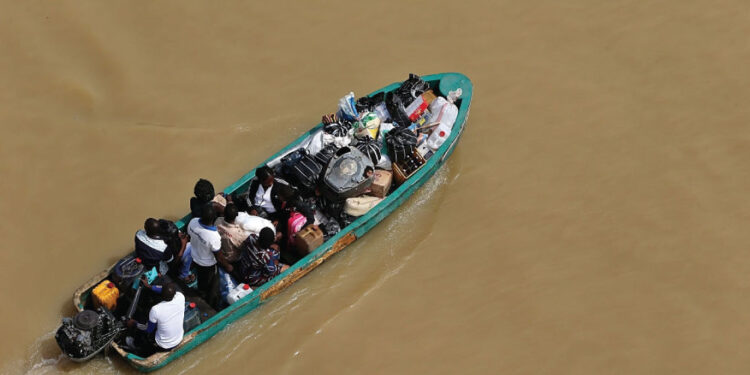The Federal Governemt has warned of more devastating effects of the flooding in Anambra, Cross Rivers, Rivers, Delta and Bayelsa state and urged the respective state governments to relocate residents in flood prone areas to high grounds.
Minister of Humanitarian Affairs, Disaster Management and Social Development, Hajiya Sadiya Umar-Farouq, gave the warning during a press conference in Abuja.
The Minister who expressed sadness over the loss of lives and destruction of property, disclosed that the disaster has so far killed over 603 persons, displaced 1,302,589 persons and destroyed over 108,393 hectares of farmlands across the country.
Similarly, the government disclosed that the disaster injured 2,407 persons, partially damaged 121,318 houses, totally damaged 82,053 houses, partially damaged 108,392 hectares of farmlands and totally damaged 332,327 hectares of farmlands, all across Nigeria
Her words, “The Ministry of Humanitarian Affairs, Disaster Management and Social Development is concerned that despite all our efforts of averting the consequence of the 2022 flooding season, unfortunately we have recorded the loss of over 500 lives, partial or total damage of more than 90,000 houses, damage of more than 140, 000 hectares of farmland, so many roads and other infrastructures were also affected.”
The current flood which has affected 31 states of the country and Abuja is the worst in the history of Nigeria. Before now, the 2012 flood was the worst as rivers burst their banks and submerged vast lands in 30 of the country’s 36 states, killing over 400 people, displaced 2.1 million people, affected seven million others and caused N2.5 trillion damage, according to the Nigeria’s National Emergency Management Agency, NEMA.
The seriousness of the 2012 flooding, referred to as the most harmful in the last 40 years, was attributed to a combination of two events: very heavy local rainfall and the release of excess water from the Lagdo Dam in neighbouring Republic of Cameroon.
In 2013, heavy rains and floods, which started mid-July, affected more than 81,500 people across Nigeria. Almost 8,000 people were displaced and more than 6,500 homes were damaged. No fewer than 25 deaths were recorded and 2,217 farmlands were destroyed.
In 2017, NEMA said that 27 states experienced devastating flood disasters, in which no fewer than 90 people died. In 2018, death toll from rampaging flood across the country was 242. In 2019, a total of 277,555 people were affected by floods and 158 were killed. In 2020 the number of those affected by floods was 2,353,647 resulting in the deaths of 69 people, according to Muhammadu Muhammed, NEMA’s former head. In 2020, no fewer than 68 people died from flooding in various parts of Nigeria.



















